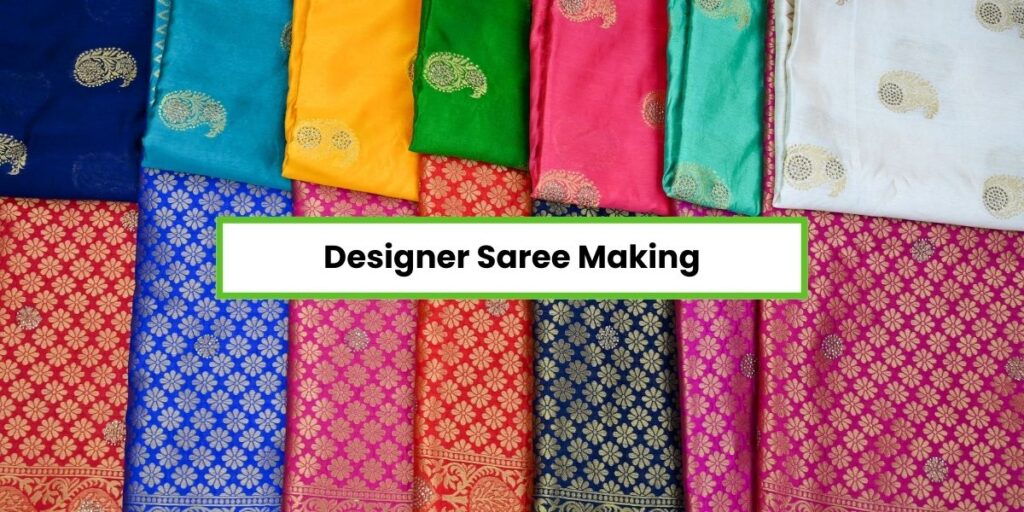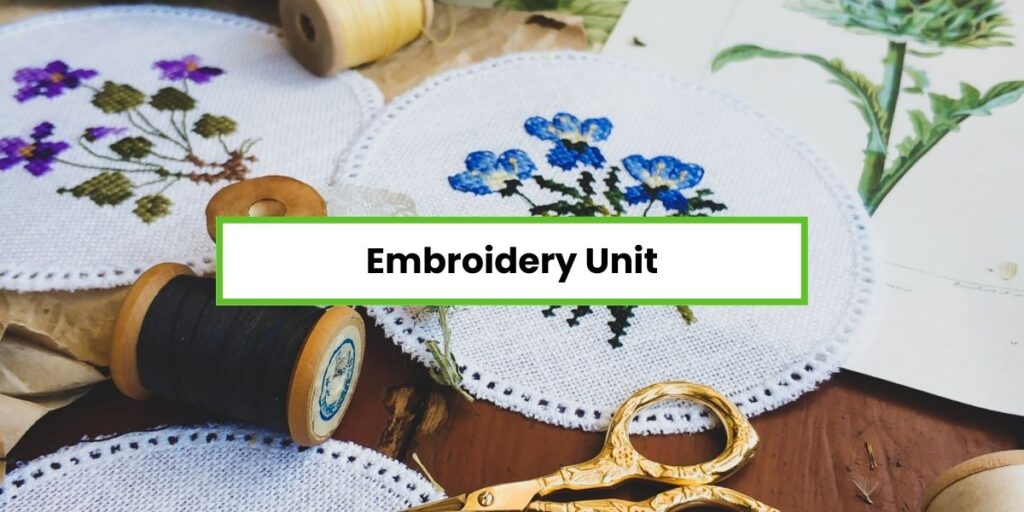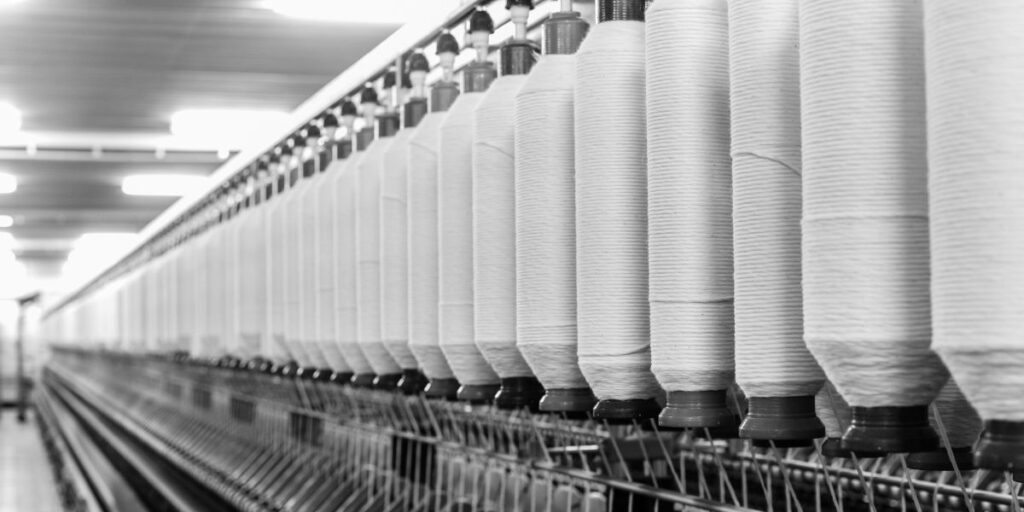The textile industry can be said to be one of the oldest and most important industries in the socio-economic fabric of the Indian economy. It plays a major role in the country’s gross domestic product, foreign exchange revenue, and employment; thereby rendering itself as one of the cornerstones of the Indian economy.
The textile industry of India is as old as civilization and the country continues to be one of the largest producers of textile and handloom products in the world such as natural fiber products, handloom products, etc. Textile and apparel are one of the significant export segments representing approximately 13 percent of India’s total exports.
Key Facts About the Indian Textile Industry
Before exploring profitable textile business ideas, it’s crucial to understand some key aspects of India’s textile industry: Before exploring profitable textile business ideas, it’s crucial to understand some key aspects of India’s textile industry:
- Diverse Product Range: It encompasses a wide category of products that include cotton, silk, wool, synthetic fibers, apparel, and garments. This diversity makes room for several business possibilities at upstream, midstream, or downstream value chain levels.
- Employment Generation: The textile industry is the second largest industry in India which is the main source of employment for millions of people both in urban as well as rural areas. It has a major function of dealing with the issue of unemployment particularly for low-skilled employees and is therefore both socially and economically relevant.
- Cultural Preservation: It helps to maintain the art of handloom weaving, dyeing, embroidering etc which are a part of Indian heritage and an identity of India’s traditional skills. Most of the textile companies, including the unorganized ones, have made it their priority to popularize native artwork.
- Organized and Unorganized Segments: The textile industry in India can be divided into two categories, namely the traditional category which mainly consists of large-scale factories and mills, and the non-traditional category which comprises small-scale, cottage, and home-based industries. Still, it is possible to identify potential business opportunities in both segments.
- Significant Contribution to GDP: On average the textile industry accounts for about 2%. 3% of its GDP and 15% of the manufacturing growth rate of the country. Its contribution to the export earnings also makes it more valuable.
Benefits of Starting a Textile Business in India
The following are some of the opportunities that any entrepreneur who wants to venture in the textile industry will enjoy: Here are some key reasons why starting a textile business in India is appealing: Here are some key reasons why starting a textile business in India is appealing:
- Consistent Revenue Generation: Consumer durables, and particularly necessities such as apparel and textiles continue to exhibit constant demand. From casual wear apparel, and surgical cotton to luxury products such as designer sarees, textile products are basic needs.
- Opportunity for Global Expansion: There is a rising need for Indian textile products across the global market because of the evolving market for environmentally friendly products such as jute bags and organic cotton. A large number of textile ventures can venture overseas increase export sales, and make use of international markets.
- High Profitability with Low Investment: Most textiles involve basic sewing threads, manufacturing of sewing threads, or embroidery services that can be initiated at a low level of capital investment thus suitable for the start-up businessman. The product also has a high demand and the business can generate high profitability since production costs are relatively low as the business expands.
- Loyal Customer Base: India has a huge and diverse population with the purchasing power parity on the rise hence the opportunities to establish a pool of customers. Also, customers look for quality and value for their money to make repeat purchases to trusted textile brands.
- Effective Social Media Marketing: Thus, textile enterprises can benefit from social media in increasing electronic business and digital marketing platforms and services, especially in the fashion and custom segments. Social media such as Instagram, Facebook, and other related sites can create direct access to customers hence improving brand awareness.
- Steady Demand for Textile Products: The need for textiles, being in fashion, home use, or even in the medical field, is always present. Other factors, including festivals, which are other off-peak occasions, provide additional business expansion potentialities, particularly for conventional apparel including sarees and lehengas.
- Supplier and Wholesaler Connections: The textile industry in India is fairly mature and companies can easily source their requirements from the suppliers and wholesalers. This reduces the complexity of procuring the materials and makes the flow of operations; especially in the production line very efficient.
List of the Best Business Ideas in Textile Industry
1. Sewing Thread Reels Manufacturing

There are sewing thread reels that are used in almost every household, for sewing and tailoring and in different industries. The manufacturing procedure is easy and the market is very big. This business requires high cotton threads and occasionally silk, viscose rayon, and polyester and thus it is very profitable.
The use of threads in households and tailoring shops is almost common which means it has a wide market base. It is also very suitable to be expanded gradually in the textile business due to its scalability.
Key Points:
- High demand for cotton reels and balls
- Seasonal demand for silk, viscose rayon, and polyester cotton reels
- Simple manufacturing process
- Wide market reach, including households and tailoring businesses
2. Surgical Cotton Production

Surgical cotton or absorbent cotton is one of the most important products in healthcare settings for surgeries, wound dressing, or hygiene. Due to its widespread use in hospitals, clinics, and first aid, it opens up new commercial prospects.
Today there is a higher level of health consciousness and the medical facilities are growing in the country, including the rural areas, thus creating the demand for surgical cotton. The production process is quite simple and it can be exploited for large-scale manufacturing to supply major healthcare institutions and small-scale production for individual use.
Key Points:
- High demand in hospitals, clinics, and healthcare centers
- Used in both medical and personal care applications
- Growing market due to increased health awareness and improved medical facilities
- Potential for expansion in rural areas with developing healthcare infrastructure
3. Jute Products Manufacturing

Jute, a natural fiber that is fully environmentally friendly, is serving a multitude of products such as bags, ropes, and articles of handicrafts. India being one of the largest producers of jute in the world there is a good demand for these environmentally friendly products. The increasing market for plastics substitutes both locally and in the global market thus makes the manufacturing of jute products a very profitable venture.
There is also the ongoing problem of environmental concerns which should be alleviated by the use of biodegradable products which the industry has room for innovation and practicality.
Key Points:
- India is one of the world’s largest jute producers
- Products include bags, ropes, handicrafts, and textiles
- Growing demand for eco-friendly alternatives to plastic
- Potential for both domestic and export markets
4. Leather Garments Production

The leather industry of India is also very famous all over the world and they export fine garments including jackets, gloves handbags etc. Leather garments are popular with the domestic and export markets, particularly with countries that experience cold weather at certain times of the year.
The leather industry is one of the major export industries of Bangalore and the world market has a great potential for expansion. The opportunities and threats of the Indian leather industry can be summarized as follows: The Indian leather manufacturers should focus on the innovation of their products and target high-end fashion brands since they have the potential for stylish, durable, and premium leather products.
Key Points:
- Bangalore is a major hub for leather garment exports
- Products include footwear, gloves, handbags, and clothing
- Growing understanding of Western market requirements
- Potential for capturing a larger share of the global leather garment market
5. Undergarment Manufacturing

Given the fact that India has a relatively large and young population, the market for undergarments is looked at as having high growth potential. An increase in consumers’ disposable income and a shift in their lifestyle are other factors that have pushed people to seek fashionable and branded undergarments.
Especially for men, women, and children, undergarment manufacturing involves the potential for change in the production of material, comfort, and design. The sector is huge for domestic and export markets and as demand for quality products increases it is a very profitable venture that could fill the gap in the niche or premium segments.
Key Points:
- Strong domestic and export market
- Opportunity to cater to various segments (men, women, children)
- Potential for innovation in design and materials
- Growing awareness of branded undergarments
6. Denim Garment Manufacturing

It is a versatile fabric, appreciated by people of different ages and generations. Jackets, jeans, shirts, and other apparel made from denim are evergreen and hold great sales potential. Burden, India denim has tremendous growth opportunities and evolving casual and premium fashion trends.
Market share can be expanded by customization possibilities and personalization services. Since the production costs are low and the customer base spans across the world, the production of denim garments is a viable and sustainable business.
Key Points:
- Wide range of products including jeans, shirts, jackets, and accessories
- Growing popularity of denim among all demographics
- Potential for both casual and premium denim markets
- Opportunity for customization and personalization
7. Designer Saree Making

Designer sarees are the fusion of the conventional touch with the contemporary trend of fashion for domestic as well as global consumers. Today consumers are more inclined towards new and innovative sarees for marriage functions, festivals, and other functions. Venturing into this business enables one to design fabrics, designs and embroider them allowing the business people to come up with unique items.
The selling of products online and collaboration with boutiques can increase the market coverage. Dress sarees are evergreen in Indian fashion which gives a continuous business and also there is the scope for diversification into other segments such as accessories.
Key Points:
- High demand in both domestic and international markets
- Opportunity for creativity and unique designs
- Potential for online sales and boutique partnerships
- Scope for expansion into related products like blouses and accessories
8. Embroidery Unit

Embroidery services apply to most textiles; they can be applied to clothes, and home accessories among others. As an added advantage, this business does not require a huge capital to start and it accommodates both the small consumer and the large manufacturer.
The use of modern computerized embroidery machines makes it possible to achieve a high level of accuracy and speed, which means that this business can be easily scaled. Fashion, promotional products, and textile home industries have a higher demand for precision embroidery to cater to the increasing market demand for unique and specialized embroidery both in handwork and by machine.
Key Points:
- Can be started with a relatively low initial investment
- Opportunity to serve both individual customers and large manufacturers
- Potential for computerized or digital embroidery for precision and efficiency
- Wide application in fashion, home textiles, and promotional products
9. Knitting Garments Production

Wear that is comfortable and can be worn throughout the year with special emphasis on the winter months garments. It is possible to begin as a supplier of services to large textile producers or create one’s line of knitwear. Being able to offer machine and hand-knitted products, this business is capable of satisfying different clients’ needs and is quite easy to expand.
It cuts across the different customers thereby making it a business that can yield good returns. The need to produce fashionable and at the same time functional products helps maintain the firm’s viability within the textile industry.
Key Points:
- Can start as a service provider for large manufacturers
- Potential to develop your clothing line
- Opportunity to cater to different seasons and demographics
- Scope for both machine and hand-knitted products
10. Textile Retail Store

It is a good idea to open a textile retail store since the business opportunity has great potential for growth in suburban areas and small towns. That is why with moderate investments it is possible to provide a large number of textile products, including fabrics and ready-made clothing.
A good location and localized advertising and marketing are vital to the success of a business. Also, the opportunity to expand through online sales channels is also another source of revenue. This business is stable and with the proper management of this business, the chance of expanding into a more extensive network of stores exists.
Key Points:
- Can be started on a small scale with moderate investment
- Opportunity to offer a wide range of textile products
- Potential for growth through online sales channels
- Importance of location selection and local marketing efforts
How Leo Can Help Your Textile Business
Many things are associated with managing a textile business; for instance, stock, orders, and customer information. Lio, a versatile data management app, can streamline your business processes: Lio, a versatile data management app, can streamline your business processes:
- Centralized Data Management: All your records should be kept in one location and be easily retrievable on your mobile device.
- Time and Cost Efficiency: Minimize the time that is spent on data entry, information search, and error correction.
- Decision Support: To achieve strategic management of your business, it is important to have a clear and detailed picture of the business structure, its responsibilities, and the assets it possesses.
- Data Analysis: Ascertain a number of different datasets such as specialist information, news, and business notes.
- Collaboration: Invite your team members and work on a document simultaneously with each other.
- Customization: Select from more than 60 templates or customize one according to the requirements of your business.
- Multi-language Support: Work in your preferred language with supporting 10 Indian languages.
To sum up
In the Indian textile industry, there are many opportunities for those who are involved in the production and selling of textiles. You can create a successful venture in this promising field if you select a suitable niche, predict market needs, and apply technology to manage your business.
Whether it is conventional products like embroidering and sarees or modern products like denim and knitted garments, innovation and growth are very much possible in the Indian textile market. So, with proper strategies and tools like Lio, you can get the most out of this growing industry and add to the fabric of India’s textile legacy while creating a successful venture.
When going into any of these textile business ideas, make sure you research the market, know the laws, and have a strategic plan in place. If one has determination, innovation, and planning, then it is possible to write a success story in the colorful picture of the textile industry of India.
FAQs
1. Which are the best Textile Business Opportunities in India?
Some successful textile business ideas are as follows: sewing thread reels, surgical cotton, jute products, leather garments, undergarments, denim garments, designer sarees, embroidery units, knitting garments, textile retail stores.
2. What makes textile to be regarded as a good sector for business in India?
The four main characteristics of the textile industry are steady demand, high profitability, global market, and the low level of investment opportunities. It is one of the largest sectors in the Indian economy and also provides employment to millions of people.
3. What capital is needed to open a textile company?
It depends on the type of investment; small investments are sewing threads and embroidering, whereas larger businesses like denim and leather garments are of large investment.
4. What are the advantages of going international?
It opens up markets abroad, higher returns and increased opportunities for the demand of Indian textiles such as jute and organic cotton.
5. What should one think about before getting started?
First, analyze the market demand, the choice of niches, the location of the enterprise, possible restrictions, and the use of the internet for advertising purposes. Customer preference and good relations with the suppliers are some of the factors that lead to success.

